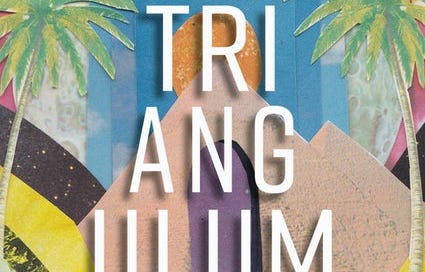Themes: Post-Apartheid South Africa, Eco-terrorism, UFOs, Coming of Age
Read this if: You enjoy non-American sci-fi (i.e. The Three Body Problem).
Don’t read this if: You dislike stories with multiple timelines
Links to purchase: Two Dollar Radio, Amazon
Throughout the 20th century, Space was an unquestionably American domain. Between real world happenings (the space race, the Apollo missions, Area 51) and Hollywood productions (E.T., Alien, Men in Black), it has seemed natural that when aliens visit Earth, they visit America. This cultural dominance of space and science fiction existed in literature as well. Ender’s Game, The Dune Chronicles, The Foundation Series, all the machinations of Americans with their gazes turned towards the cosmos.
Even if you are limited to looking at the world of English media, you can see that the turn of the century has brought with it a proliferation of acclaim for science fiction with non-American origins. The British sci-fi horror comedy Attack the Block launched the career of new Star Wars lead John Boyega, meanwhile Korean Cinema carved itself a niche in train-based science fiction, see Snowpiercer and Train to Busan, and China saw The Three Body Problem go from local bestseller to international fame.
Before all those however, the South African sci-fi action film District 9 became a dark horse nomination for the academy award’s 2009 best picture award. For those who don’t remember, the film takes place in an alternative present, where a marooned alien species known as `Prawns` has been confined to a refugee ghetto on the outskirts of Johannesburg (District 9). The story draws heavy influence on the history of Apartheid South Africa and projects it onto humanities interactions with aliens. District 9 is relevant, not because Triangulum features aliens in the plot (although it does), but because it is also a story that is emblematic of South Africa’s unique history.
In Triangulum, the author, Masande Ntshanga, successfully pulls several South African historical threads into the future to craft a dystopian future that feels like a natural continuum of the past and present. Exploitative mineral mining yields to exploitative data mining, racial inequality becomes income inequality, and townships become labor camps. In an interview with the Johannesburg Book Review, Masande admits that as he began writing he realised that, “we [South Africa] have already been through it—the kind of tiered and oppressive technological society that’s a trope in a lot of science fiction narratives about the future. Including human experiments and large-scale environmental disasters… In other words, in order to imagine what could be, all I had to do was research what had been and crib it.” A grim, but understandable sentiment.
In the year 2043, a note detailing the end of the world in 2050 along with an accompanying memoir are mysteriously delivered to SANSA (South African Space Agency). What catches the agency’s attention is the perturbing accuracy with which the note is able to predict current events. The SANSA team studying the materials decides to release the note, and the accompanying memoir in order for the general public to take head of its warning, and hopefully stave off the predicted demise. This is the premise established in the book’s foreword (don’t skip the forward). The rest of the book proceeds as a copy of the note’s attached memoir. As for why there was a memoir sent alongside a note detailing humanity’s demise? A cover letter with the note and memoir explains:
“I am still human, or I was human, and to understand me one must understand the life I’ve lived, and I require that this be an accompaniment to the text... The message I wish to pass on is not complicated. There is indeed a force more powerful than humankind. I have assented and do not know much else.”
The memoir of the unnamed prophetess is divided into three parts. Part one is structured as a series of written entries from 1999 interspersed with recorded recollections of her life in 2002. These remembrances document her troubled coming of age, during which she struggles to deal with the unexplained disappearance of her mother, the impending death of her father from a worsening lung disease, and hallucinations, which she attributes to Aliens reaching out to her. The middle section of the book stands distinct from the first, a hard driving action story within a larger story. It takes place circa 2025 when the woman, now in her thirties, is working as a programmer for a shadowy American technology company exploiting South Africans for data, and moonlighting as a hacktivist. Her role as a hacktivist leads to her being sent a covert mission to infiltrate an eco-terror group. The third and final part of the memoir returns back to the entries from 1999 and 2002, connecting the two stories, and thus completing the triangle.
If all that sounds complex, it’s because it is. The plot is roving, and the fact that it’s coherent is its own accomplishment. I’ll admit that I sometimes lost track of whether it was 1999 or 2002, but by the end, the sequence of events is quite clear. Some people will reasonably question whether placing a digital espionage thriller smack dab in the middle of a coming of age story is a sensible thing for an author to do, but on the whole I thought that it worked, and nicely spiced things up. If you’re looking for pure sci-fi, this probably isn’t the book for you. However, if you want to learn some South African history and experience a literary potpourri with elements of sci-fi, teenage coming of age, espionage thriller, and more then give Triangulum a read.
If you’ve made it this far in the review, thanks for sticking with it! I’m giving away my Kindle copy of this book to the first person to respond to the email requesting it. Thanks for reading!


